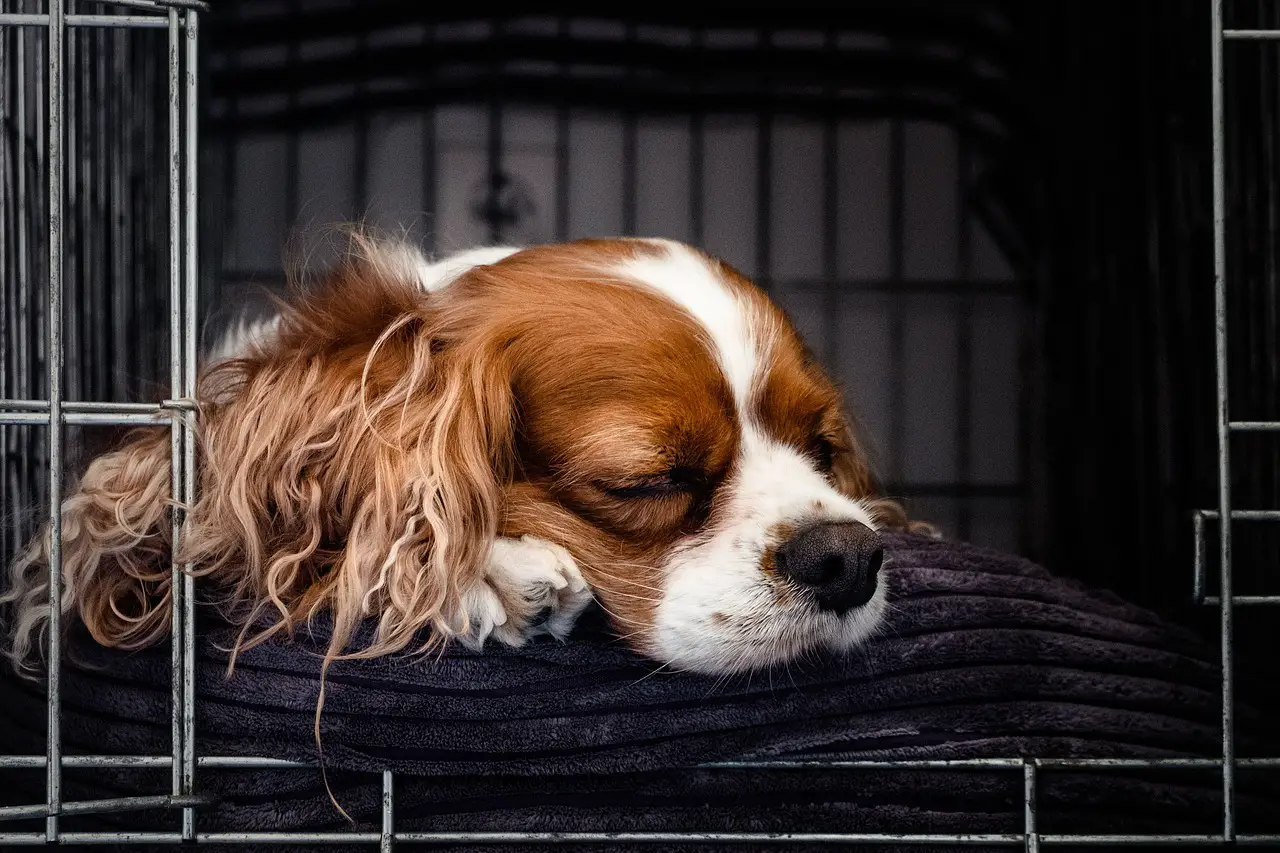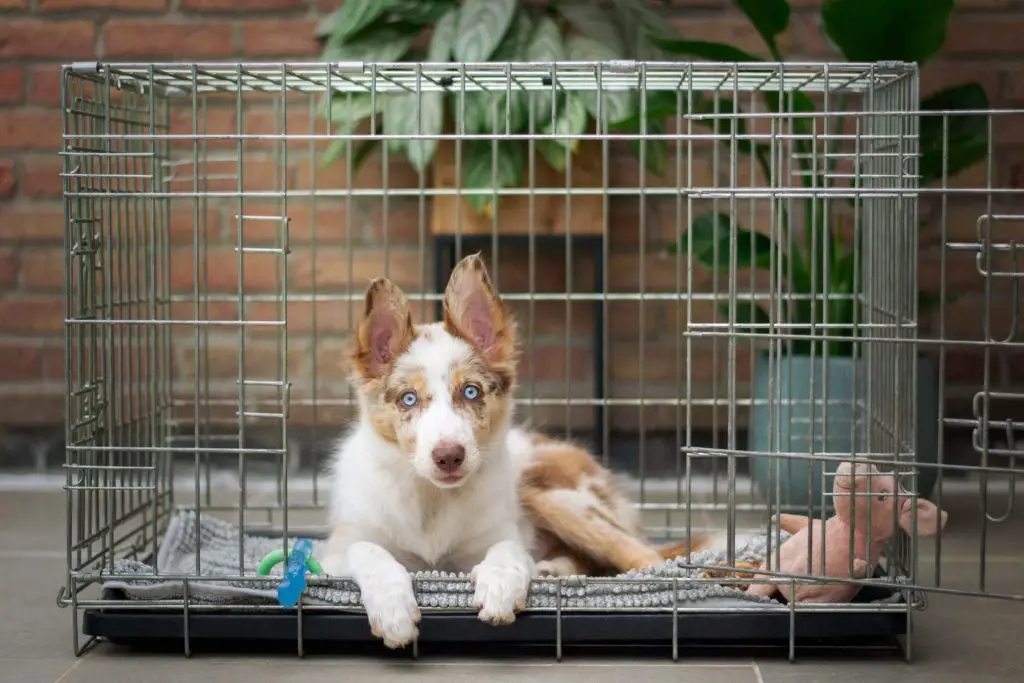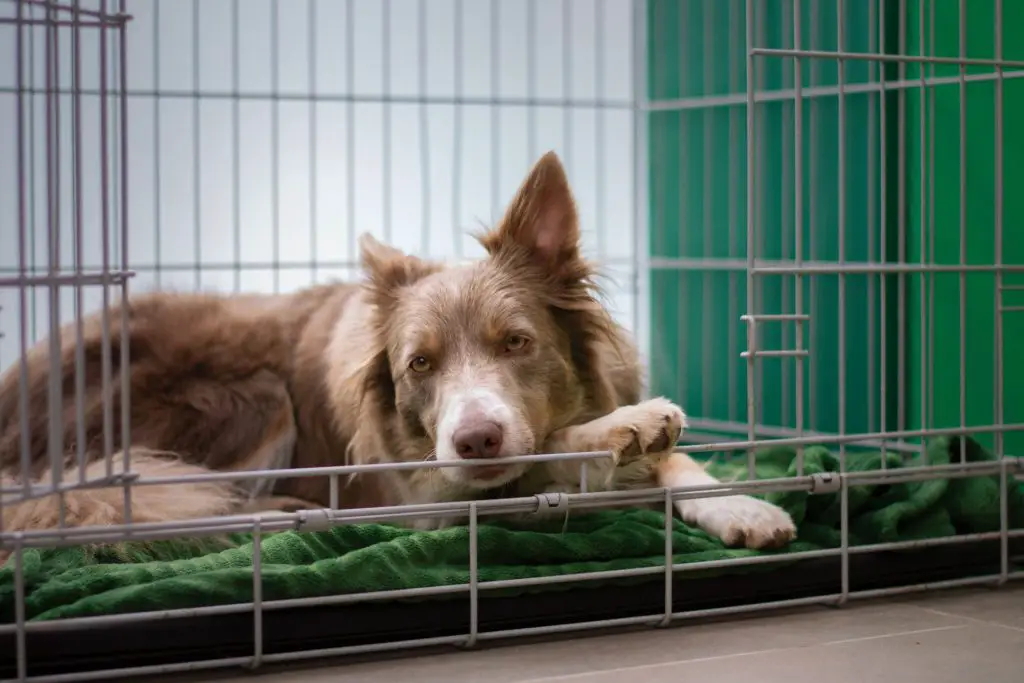How To Crate Train A Rescue Dog

Crate training a rescue dog is more than just teaching your dog to stay in a crate; it’s about providing them with a sense of security and comfort in their new environment. Imagine a safe haven, a personal space where your rescue dog can retreat to feel secure and at peace. This is the essence of a well-trained crate experience.
But how do you transform a simple crate into such a sanctuary, especially for a dog that may have had a troubled past? The answer lies in patience, understanding, and well of course, the right approach.
When reading through these steps below, remember that every dog, like each one of us, is unique. And what works for one may not work for another.
Is Crate Training Right For Your Dog?
Crates are a safe and secure place for your dog to retreat to, however you must first decide if crate training is right for your rescue dog.
Crate training is useful for:
- Puppies
- Dogs that are proving difficult to toilet train
- Dogs that have a tendency to be destructive and chew a lot
- A household where kids are active and don’t give pets a break
Crate training isn’t so useful for:
- Senior dogs that have been abused by form of confinement in a crate or cage for long periods
- Dogs with severe separation anxiety
- Senior dogs that are showing signs of dementia
How To Crate Train Your Rescue Dog
1) Pick the right crate
Choosing the right crate for your rescue dog is the first step. Get to know the breed characteristics by asking yourself some simple common sense questions.
How large is my dog? Is it likely to grow further? Breeds such as Mastiffs can grow to enormous sizes meaning you’ll likely need to invest in a crate that accommodates this. You may also need to think about comfortable bedding for your dog. Once again, breeds like Mastiffs suffer from joint issues, so comfortable beds are a must!
Does your new rescue dog like to chew a lot? Does it have any destructive tendencies? Breeds like Huskies and even pit bulls (both common in shelters) like to chew, this means your crate will need to be robust.
2) Introduce the crate to your dog
It’s very possible that your new rescue dog has never seen a crate before. Perhaps its previous owners never invested in one, or perhaps it’s a young pup that hasn’t yet experienced a crate.
Regardless, a great way to introduce the crate to your rescue dog is to associate it with positive outcomes. So lead them to it, let them sniff around a bit, let them explore and then reward them with a treat.

Puppies may take to this better, due to their curious and fearless nature. But what if your dog is more senior and is more cautious? Then ultimately, you’ll need to take things slow.
You can start by giving them treats near the crate, then slowly start to place them inside the crate as they become more familiar with it. Over time they will come to realize that there is nothing to be concerned about and should start to associate it with yummy treats.
A final tip is to ensure that the crate is also comfortable. This not only means adequate space but comfortable bedding. Eventually placing a favorite toy in there is also a good move.
3) Gradually Increase The Crating Time
Rescue dogs are more prone to anxiety than others, this means that patience is required in all forms of training and interaction. Eventually, the goal is for your dog to see the crate as a place of sanctuary and relaxation.
When it comes to crate training your rescue dog, you should look to gradually increase the time in the crate by a factor of 15-30 minutes, until they become used to being confined within a crate.
You should never go from a short burst of 15 minutes to a long stay of 4-5 hours without gradually building up as your dog may become nervous and apprehensive, undoing any positive associations you have initially built.
4) Staying In The Crate Overnight
You’ll likely find that your rescue dog adapts to its crate just fine whilst you are home, but what about when you go out? Or even overnight?
Again this is something that you’ll want to gradually build up to. At first, you’ll only want to leave for short periods of time and see how your dog reacts. You can do this by simply leaving the room for 5 minutes and standing by the door, then returning, gradually increasing the time away. The idea is you slowly want to get your dog used to you not being around all of the time.
This step requires some patience and adaptability. You may find that you need to take a step back here and there. You can also be tactical by placing a favorite chew toy in there to help keep them occupied. Additionally, if budget is no concern, you can invest in a camera or even a baby monitor to listen out for barking or whining.
Some owners have found that placing the crate in their bedroom overnight can be a useful tip. This helps the dog get used to sleeping in the crate in the first place. Additionally, starting your crate training sessions in the evening when they are most tired is often easier as they’re less energetic and wired.
Other Tips For Successful Crate Training
Feeding Your Dog In The Crate
If room permits, some owners choose to feed their rescue dog inside the crate in order to create another positive association with the crate.
You can start by placing the bowl at the front of the crate with the door open. Overtime, you can place the bowl further away and then close the door. If your dog is no longer bothered by the door being closed, then that is a great signal that they are comfortable with the crate.
Never Open The Crate Whilst Your Dog Is Barking
When extending their crate time, it’s a good idea to ignore them if they start to bark. This may seem hard at first but ultimately necessary otherwise they will learn that barking gets them what they want.
Instead, you should return to the crate when they are quiet.

Mix Things Up By Leaving Surprises In The Crate
You get the drift. Random treats, chews and toys left in their crate can help build further positive associations with the crate.
You want to do this at random so that it doesn’t become a permanent expectation. However the anticipation will help keep your dog engaged in the training.
Common Pitfalls
Crate training a rescue dog has its challenges, but is typically successful. However, avoid common pitfalls by doing further research and following our advice below.
before You Crate Train A rescue Dog – Get to know its History
Quiz the shelter on your dog’s past. For instance, is much known about the previous owners, did they give any insight into how they housed the dog. Unfortunately, many dogs are kept in crates as a form of punishment or confinement, which may have bred unfortunate negative sentiment towards a crate.
Your Rescue Dogs Character & Temperament
Your dog’s temperament can give you a rough indication of how they may respond to crate training. A dog that likes to feel safe may eventually come to love its crate, whereas a more social dog may be less bothered by it.
What about a dog that has a history of destructive behavior? This is fairly common in shelters and may have been given up for exactly this reason. In this case, crating is a great way to keep your dog and your belongings safe. Just ensure you purchase a crate that is robust enough to handle their chewing tendencies, at least until you’re able to train that behavior out of them.
Your Dogs Age
If you have adopted a puppy then crate training is a great way to speed up potty training as most dogs will not tend to toilet in their own space. This is especially handy at night time as cleaning up potty accidents isn’t exactly a welcome way to start your morning.
What if you have adopted a senior dog?
If you have decided to adopt a dog in its senior years, then well done. Many stay in shelters for a long time as less people are willing to take them.
If they have been previously crate trained, then try to replicate what they’re used to. However, if your senior dog has never been crate trained, then it’s probably not a good idea to start now. This is especially true if your senior dog has signs of early dementia. For this dog, a closed crate may trigger anxiety and eventually cause further distress and harm.
What To Do Whilst Training Is In Progress
As you’ll be aware by now, crate training a rescue dog can come with its challenges. Many of us work long hours and have multiple commitments that can get in the way.
This leaves people in somewhat of a quandary. You need to leave the house for hours at a time, yet you’re not supposed to confine your rescue dog to its crate, you’re also not so sure about letting them roam the house yet.
Below are some options to help you through the process.
Dog Pen
Dog pens offer a degree of flexibility. They give clear boundaries, yet their open nature doesn’t leave the dog feeling too cramped and confined.
Dog pens come in various sizes and quality. If this is something you’re interested in then you should likely consider one with a robust build that can not be chewed or destroyed.
You also need to consider if a dog pen is going to be any use for your breed of rescue dog. Have you got an escape artist on your hands such as a husky?
Dog Proofed Areas
A dog proofed area can be a great interim solution whilst going through the crate training process. An office, a conservatory or any small room that offers a degree of comfort can be used.
Depending on your dogs age, you may also want to place some puppy pads in the room for their toileting needs.
Doggy Day Care
Doggy day care is not just a great tool for socialization, it can also act as a good tactic for ensuring your dog is supervised throughout the day in a safe environment. Some doggy day cares will also offer training classes throughout the day.
Pet Sitter
Similar to doggy day care, a pet sitter can also supervise your rescue dog throughout the day. Interacting with them, ensuring their needs are met and that they feel comfortable in their new home.
Working From Home
Remote working has been a godsend for some people with pets. It offers a degree of flexibility that owners can use to ensure their pets’ needs are being met. If your job offers a form of hybrid working or remote working, then you should certainly consider it (I’m sure you already have).
A word of caution, depending on the circumstances, being available 24/7 can sometimes build a sense of complacency. Your dog ideally needs to get used to the fact that you may leave the house for hours at a time.